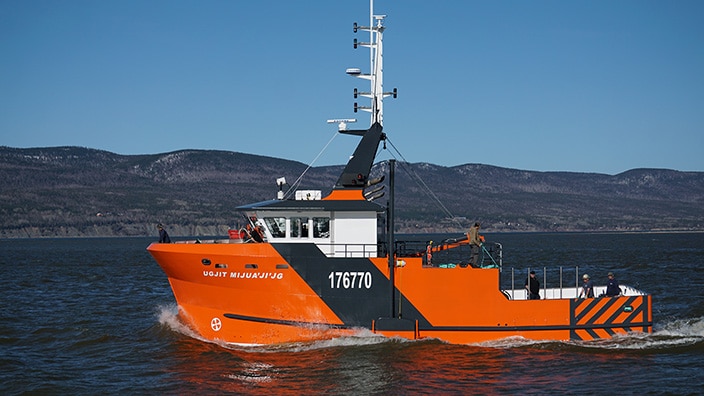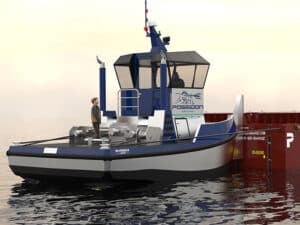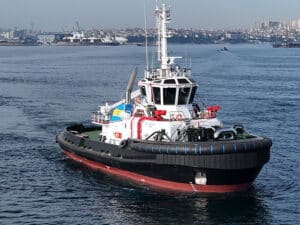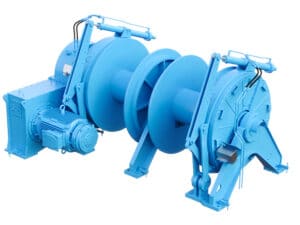
Canadian yard delivers a versatile fisheries vessel
Written by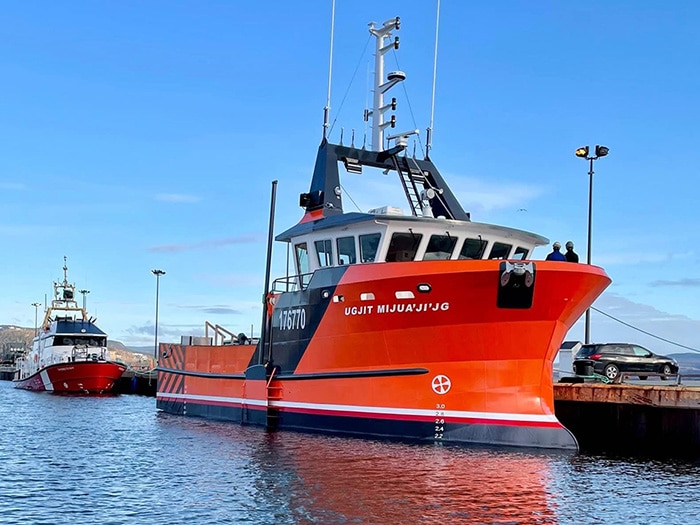
The combination crab trap/trawler Ugjit Mijua’ji’jg, alongside. Note stabilizer in retracted position.
by Alan Haig- Brown
The Listuguj Mi’gmaq Government, an indigenous Canadian community on Quebec’s Gaspé Peninsula, has accepted delivery of a new 19.81 by 7.31-meter (65 x24-foot) combination crab trap and groundfish trawler. The vessel was designed by NAVANEX and built by Chantier Naval Forillon, both of Gaspé, Quebec, Canada. Named Ugjit Mijua’ji’jg in the Mi’gmaw language, the name means “For Our Children”, a reference to the optimism that the community has for its continuing role in commercial fishery.
This is the third vessel that Chantier Naval Forillon has built for the Listuguj Mi’gmaq Government and the most sophisticated. It has several features that will equip it for efficiency in both pot fishery for snow crab and for trawling shrimp and bottom fish.
The steel-hulled vessel has a raised forecastle design with an aluminum pilot house. When crab fishing, the clear, aft deck can carry up to 150 collapsible, 100-pound crab pots. When rigged for trawling, a gantry, with two net drums, will be mounted over the stern. A pair to trawl winches will be mounted on a platform aft of the raised fo’c’sle.
The designers have included features to make the vessel more comfortable for a crew of up to seven people. A newly designed bulbous bow, in addition to improving fuel efficiency, helps reduce pitching when working gear into a swell. A pair of stabilizers is based on a design first installed by Chantier Naval Forillon on the trawler Fundy Leader in 2006. A number of these systems have proven effective on other vessels. The stabilizer is a simple steel plate, hinged at the bottom on the bilge chine. It can be hydraulically raised flat against the hull or lowered to a horizontal position. The shipyard’s technical director, Jean-Nil Morissette, explains that the system functions very well to dampen motion both when traveling or when working gear.
CUMMINS POWERED
Propulsion power is provided by an IMO-compliant tier III, Cummins QSK19 producing 750 hp at 1,800 RPM, coupled to a Twin Disc MGX-5222 gear with 5.04:1 reduction. This turns a four-blade Rice Kaplan skewed propeller with a 57-inch diameter and a 67-inch pitch. The prop’s thrust is enhanced with a Rice speed nozzle. This system will give the vessel a cruising speed of nine knots and a bollard pull of 8.2 metric tons.
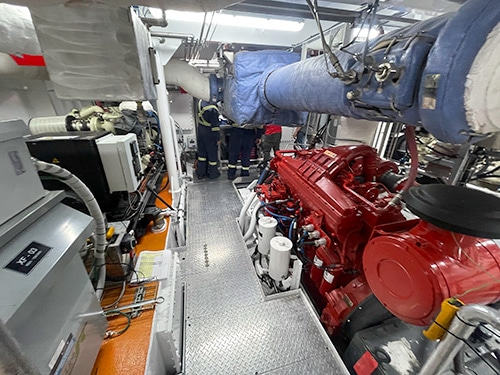
To meet the IMO tier III emissions, the QSK19 main engine is fitted with an SCR after treatment system including DEF (Diesel Exhaust Fluid) injection unit. The system utilizes pressurized air to atomize the DEF for better mixing and a complete chemical reaction. This system allows for reduced consumption of DEF.
Multiple housing and configurations are available for these SCR after treatment systems. Cummins technicians were able to take advantage of the significant space between the engine room deckhead and the top of the QSK19 main engine. The arrangement allows ample access to the main engine while facilitating ready access for technicians to the service panel. The engine and SCR system are integrated, controlled, and monitored through an electronic interface which displays system out NOx and NOx conversion efficiency on a monitor in the wheelhouse. On trials, the wheelhouse monitor reported NOx reduction of 91.2 percent.
Auxiliary power includes a Cummins QSB7-DM genset producing 65 kW and an additional QSM11-DM engine producing 355 hp at 1800 RPM. This engine drives the vessel’s hydraulic pumps and a back-up 65 kW genset. Main and auxiliary engines were supplied by Cummins Sales and Service, Quebec, Canada.
A comprehensive set of deck equipment includes a Heila HLM 3-2S deck crane. For crabbing there is a crab hauler, crab table, crab boom and crab block. For trawling, in addition to the two trawl winches and net drums, there is a bag winch. The anchor winch is mounted so that the anchor will lower to the starboard side of the bulbous bow.
Crew accommodations are foreword in the raised forecastle with the galley and mess in the aft part of that cabin. The RSW-equipped holds have capacity for 60,000 pounds of crab in four sections. An insulated bait hold has a volume of 7.8 meters. Tankage includes 23,000 liters for fuel, 7,900 liters for water and 2,000 liters for DEF.
